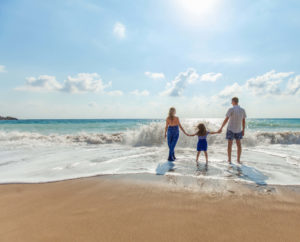Most people really don’t think much about their veins until they start noticing them, and usually not for good reasons such as varicose veins and their less noticeable cousins, spider veins.
(An exception would be for bodybuilders, for whom large, popping veins are a desirable, if somewhat risky, competitive advantage.)
We’ve noticed that many patients who come to us for a consultation to treat varicose veins and spider veins often have misconceptions about these conditions.
We compiled a list of 6 myths that will help patients better understand chronic venous insufficiency or blood pooling in veins.
-
Varicose veins are just a cosmetic problem.
The word “just” is what makes this a myth because varicose veins may indicate a serious underlying issue. Large ropey veins, usually in the legs, are a late-surfacing symptom for chronic venous insufficiency, or the inability of the veins to carry blood up the legs and back to the heart.
Most of the time, blood flows back and forth in veins, from extremities to the heart and back. Tiny valves in the veins make sure everything flows in one direction. When these valves collapse, blood pools–most often in the legs–and pressure builds up until the veins start to bulge.
Poor circulation is a painful, sometimes life-threatening situation that can lead to leg ulcers and deep vein thrombosis (DVT), when one or more blood clots that develop in leg veins. Left untreated, it can cause a blood clot in a lung or pulmonary embolism.
-
Only women get spider or varicose veins.

Pregnancy can lead to varicose veins, so in that sense, women are more likely to get spider and varicose veins but the condition itself is not related to gender.
Moreover, varicose veins:
- (a) often run in families
- (b) occur as people age
- (c) can result from being overweight or obese
These conditions affect people of any gender.
-
Varicose vein treatment is pointless because the veins will come back.
Recurring varicose veins treatment isn’t as common today because treatment today is much more effective and includes follow-up care that boosts success rates.
We remove varicose veins using the VenaCure endovenous laser treatment (EVLT) developed by AngioDynamics®, an effective and minimally invasive approach. Its success rate is well over 95%, considerably better than traditional methods like surgical stripping or ligation and electrosurgery.
Then, we work with patients to address lifestyle changes to prevent a recurrence, including weight management, nutrition, and exercise.
-
Exercise makes veins worse.
A sedentary lifestyle contributes to the likelihood that a person will develop varicose veins. In fact, exercise can ease the causes of vein disease.
Movement helps the blood pump more effectively and leads to weight loss that can aggravate spider or varicose veins. If you’re already getting treatment for vein or circulatory problems, wear compression socks or stockings to prevent blood from pooling in the legs.
-
Varicose veins are always huge and ropey.
Not all varicose veins are the same. Some people have deep varicose veins inside their legs that aren’t visible. Symptoms include chronic, unexplained leg pain that should be checked out by a physician, particularly if it’s accompanied by itchiness.
-
Insurance won’t cover varicose vein treatment.
Insurance companies cover medically necessary procedures, which can include venous reflux disease, characterized by varicosities—the thick, twisted, and dilated parts of a varicose vein.
Some insurance companies will also consider the pain relief aspects of varicose vein treatment, as well as bleeding varicosity and dangerous swelling in the legs.
Don’t suffer in silence. Contact Palm Vascular today for a consultation about treating varicose veins.



